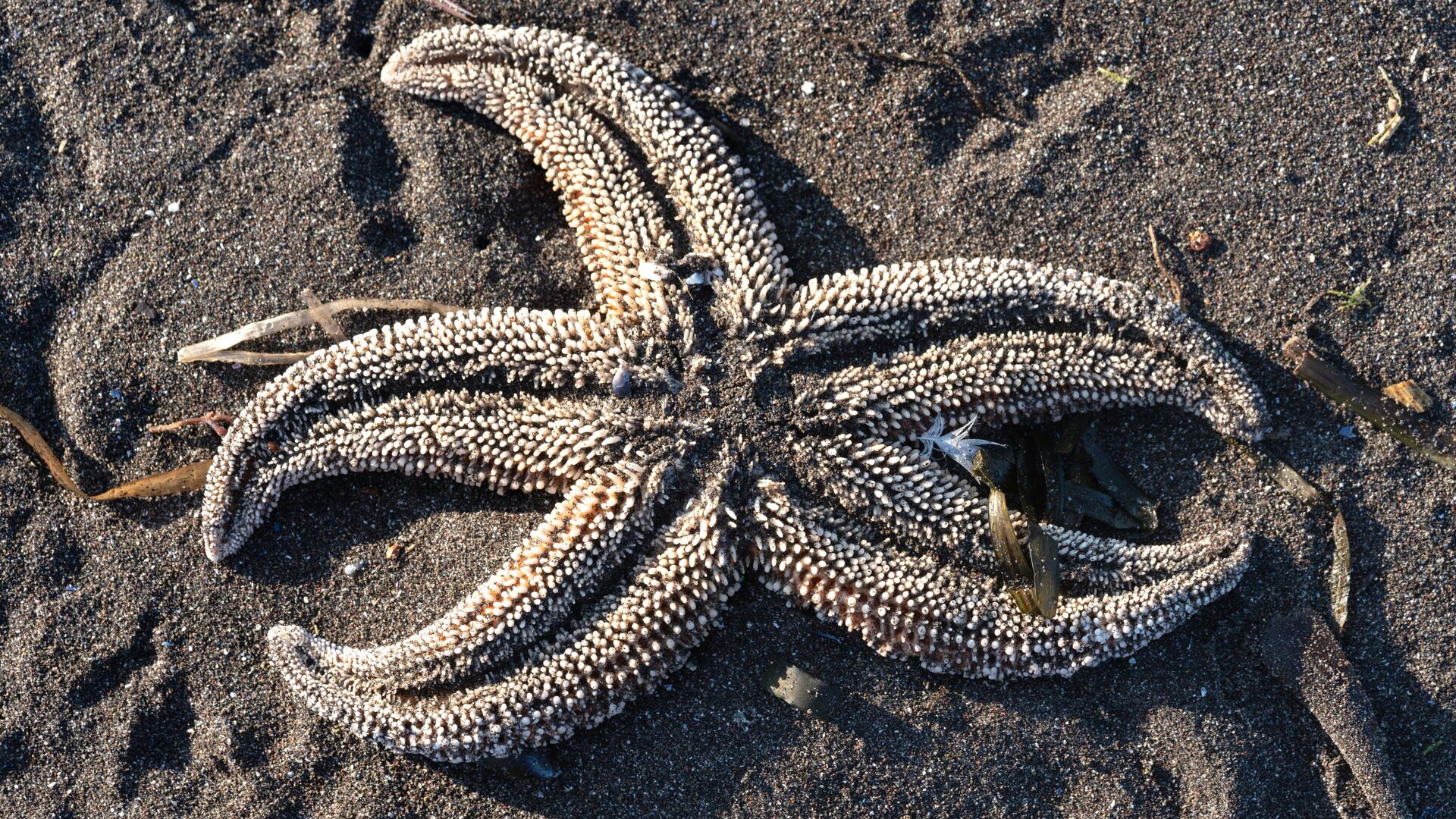https://sputnikglobe.com/20220621/new-study-sheds-light-on-evolutionary-arms-race-after-the-worst-extinction-event-ever-1096536421.html
New Study Sheds Light on Evolutionary 'Arms Race' After the Worst Extinction Event Ever
New Study Sheds Light on Evolutionary 'Arms Race' After the Worst Extinction Event Ever
Sputnik International
One of the changes that apparently occurred in the wake of the Permian-Triassic extinction event was for birds and mammals to become warm-blooded. 21.06.2022, Sputnik International
2022-06-21T18:39+0000
2022-06-21T18:39+0000
2022-06-21T19:01+0000
extinction
event
evolution
https://cdn1.img.sputnikglobe.com/img/07e4/0a/05/1080667190_0:160:3073:1888_1920x0_80_0_0_0b5f8b8cd5e85afe291cfea9badd1f6d.jpg
A new study conducted by researchers from China and the UK offers new insights into the evolution of species after probably the most severe known extinction event in history – the Permian-Triassic extinction event, also referred to as the Great Dying.Although the extinction event in question, which occurred about 252 million years ago at the end of the Permian geological period, witnessed the majority of life on our planet dying out, the Triassic period that followed witnessed a vigorous resurgence of life.Dr Feixiang Wu of the Institute for Vertebrate Paleontology in Beijing also noted that, after the Permian-Triassic mass extinction, “the fishes, lobsters, gastropods, and starfishes show nasty new hunting styles.”Profound changes also occurred on land, as birds and mammals had apparently become warm-blooded in the aftermath of the Great Dying, “early in the Triassic”, as Prof Benton puts it."Altogether, animals on land and in the oceans were speeding up, using more energy, and moving faster," Benton says. "Biologists call these kinds of processes 'arms races', referring to the Cold War. As one side speeds up and becomes warmer-blooded, the other side has to as well. This affects competition between plant-eaters or competition between predators. It also refers to predator-prey relationships - if the predator gets faster, the prey does too in order to escape."
Sputnik International
feedback@sputniknews.com
+74956456601
MIA „Rossiya Segodnya“
2022
News
en_EN
Sputnik International
feedback@sputniknews.com
+74956456601
MIA „Rossiya Segodnya“
Sputnik International
feedback@sputniknews.com
+74956456601
MIA „Rossiya Segodnya“
extinction, event, evolution
extinction, event, evolution
New Study Sheds Light on Evolutionary 'Arms Race' After the Worst Extinction Event Ever
18:39 GMT 21.06.2022 (Updated: 19:01 GMT 21.06.2022) One of the changes that apparently occurred in the wake of the Permian-Triassic extinction event was for birds and mammals to become warm-blooded.
A new study conducted by researchers from China and the UK offers new insights into the evolution of species after probably the most severe known extinction event in history – the Permian-Triassic extinction event, also referred to as the Great Dying.
Although the extinction event in question, which occurred about 252 million years ago at the end of the Permian geological period, witnessed the majority of life on our planet dying out, the Triassic period that followed witnessed a vigorous resurgence of life.
"Everything was speeding up," Professor Michael Benton of the University of Bristol School of Earth Sciences and lead author of the new study, said as quoted by phys.org.
Dr Feixiang Wu of the Institute for Vertebrate Paleontology in Beijing also noted that, after the Permian-Triassic mass extinction, “the fishes, lobsters, gastropods, and starfishes show nasty new hunting styles.”
“They were faster, snappier, and stronger than their ancestors," he added.
Profound changes also occurred on land, as birds and mammals had apparently become warm-blooded in the aftermath of the Great Dying, “early in the Triassic”, as Prof Benton puts it.
"Altogether, animals on land and in the oceans were speeding up, using more energy, and moving faster," Benton says. "Biologists call these kinds of processes 'arms races', referring to the Cold War. As one side speeds up and becomes warmer-blooded, the other side has to as well. This affects competition between plant-eaters or competition between predators. It also refers to predator-prey relationships - if the predator gets faster, the prey does too in order to escape."

